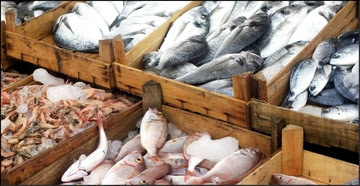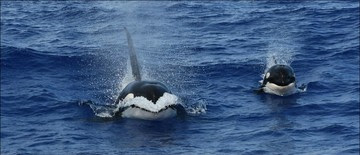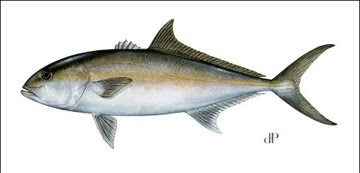HIGHLIGHTS

New Rule Combats Illegal, Fraudulent Seafood
As of January 1, seafood traders are now required to provide more documentation for fish and fish products they wish to sell U.S. consumers. Learn more about the new rule, known as the Seafood Import Monitoring Program, and NOAA’s efforts to crack down on global fish crime.

Agency Decreases Pacific Coast Groundfish Buyback Loan Fee
As of January 1, NOAA Fisheries is decreasing the Fishing Capacity Reduction sub-loan fee rate from 5 percent to 4.5 percent for the Pacific Coast Groundfish Fishery landings subject to sub-loan fees. For the first time since 2005, we projected that the current fee rate of 5 percent for the Fishing Capacity Reduction Programwould collect more than the amount needed to service the loan in 2018, allowing us to reduce the rate.

Final Rule to Modify Individual Bluefin Tuna Quota Program Regulations
NOAA Fisheries announced a final rule to modify the Atlantic highly migratory species regulations to require vessels in the pelagic longline fishery to account for bycatch of bluefin tuna using Individual Bluefin Quota quarterly rather than by trip. This change will maintain vessel accountability while providing more flexibility in vessel operations.

2018 Bycatch Reduction Funding Opportunity
This year, NOAA Fisheries kicks off the 10th anniversary of the Bycatch Reduction Engineering Program by announcing the availability of approximately $2.4 million for projects that increase collaborative research and partnerships for innovation in bycatch reduction. Pre-proposals are due January 31.
West Coast

Share the Shore during Seal Pupping Season
Seal pupping season runs approximately December to May in southern California, then spreads north up the West Coast during summer months. NOAA Fisheries reminds wildlife viewers to Share the Shore and follow safe viewing guidelines. Visitors who approach too closely may startle mother seals into abandoning their pups.

Vessel Regulations Benefit Endangered Orcas
Five years after the adoption of federal vessel regulations to protect endangered Southern Resident killer whales, an analysis found that the regulations have reduced impacts on the whales even as the whale watching industry and local tourism economies continue to grow. The analysis also found room for improved awareness and compliance among recreational boaters.

New Field Guide to West Coast Survey Fishes
NOAA Fisheries Biologist Dan Kamikawa’s recently published Technical Memorandum, Survey Fishes, is a field guide for professionals and the general public, designed to help anyone identify the fish species living in West Coast coastal waters.
Pacific Islands

Whale Science on the High Seas
People may think 6 months in Hawaii sounds like a vacation, but 46 scientists and crew aboard NOAA Ships Oscar Elton Sette and Reuben Lasker spent the 179 days this past year hard at work. The teams surveyed 1.8 million square nautical miles as part of the Hawaiian Islands Cetacean and Ecosystem Assessment Survey, or HICEAS.

Rescued Seals Make it Home for the Holidays
Three Hawaiian monks seals rehabilitated for malnourishment are now back in the wild, in time to make a fresh, healthy start in the new year. The Hawaiian Monk Seal Hospital, Ke Kai Ola, has rehabilitated 23 monk seals since it opened in 2014.
Southeast

Vermilion Snapper Rule – Open for Comment
By January 26, please submit your comments on Reef Fish Amendment 47 and a proposed rule for vermilion snapper stocks in the Gulf of Mexico. These actions would establish a proxy for the estimate of maximum sustainable yield and revise the annual catch limit.

New Transit Provisions for Gulf Shrimp Fishery
A new rule for Amendment 17B to the Shrimp Fishery Management Plan establishes transit provisions for shrimp vessels without a federal permit, specifies a minimum threshold number of Gulf of Mexico shrimp moratorium permits, and identifies a review panel process when that threshold is close to being met.

Final Rule to Modify Greater Amberjack Harvest
NOAA Fisheries announced a final rule to modify the allowable harvest and rebuilding plan for the Gulf of Mexico greater amberjack population. The reduced quotas are based on the most recent greater amberjack population assessment results, which showed that the stock biomass is still too low (stock is overfished) and that the rate of fishing is still too high (stock is undergoing overfishing).
Greater Atlantic

NOAA Fisheries Seeks NAFO Commissioner
NOAA Fisheries seeks a U.S. citizen to serve a 4-year term representing the commercial fishing industry to the Northwest Atlantic Fisheries Organization. NAFO is a regional fisheries management organization that coordinates scientific study and cooperative management of certain fisheries resources of the Northwest Atlantic Ocean. Expressions of interest are due January 12.

Chesapeake B-WET Environmental Literacy Grants
NOAA announced the availability of up to $1 million for Chesapeake Bay-Watershed Education and Training (B-WET) grant funding in 2018. This year’s grants will focus on expanding support for environmental literacy efforts into new school districts. Informational webinars will be held January 9 and 12, and applications are due March 9.

Atlantic Marine Conservation Society Joins Stranding Network
In 2017, GARFO welcomed a new partner to the Greater Atlantic Region’s marine mammal stranding response network. The newly formed organization, Atlantic Marine Conservation Society, serves as New York’s primary response organization for large live whales and for dead marine animals.

Summer Flounder, Scup, Black Sea Bass Measures
For the 2018 fishing year, NOAA Fisheries finalized the projected catch limits for black sea bass and revised the scup catch limits, increasing both the commercial and recreational scup limits to reflect an updated population estimate. NOAA Fisheries is also reducing the catch limits for commercial summer flounder to account for overages in 2016, as required.

Science Center’s Top Five Stories of 2017
Get behind the stories at the Northeast Fisheries Science Center. Science writer Shelley Dawicki reviews her top five favorite feature stories and science spotlights in 2017 and what she learned along the way.
| 
No comments:
Post a Comment